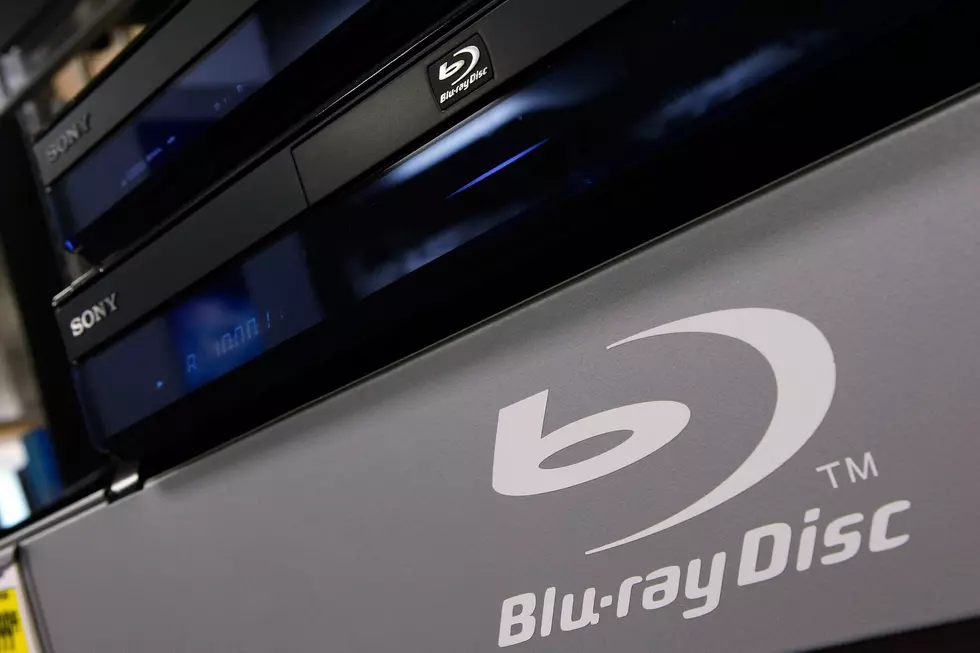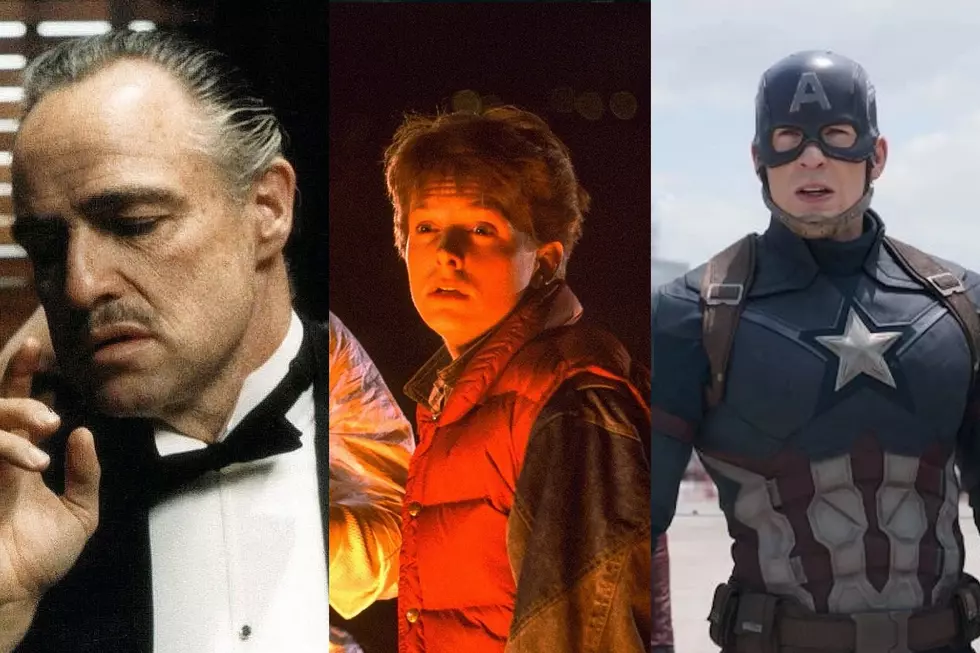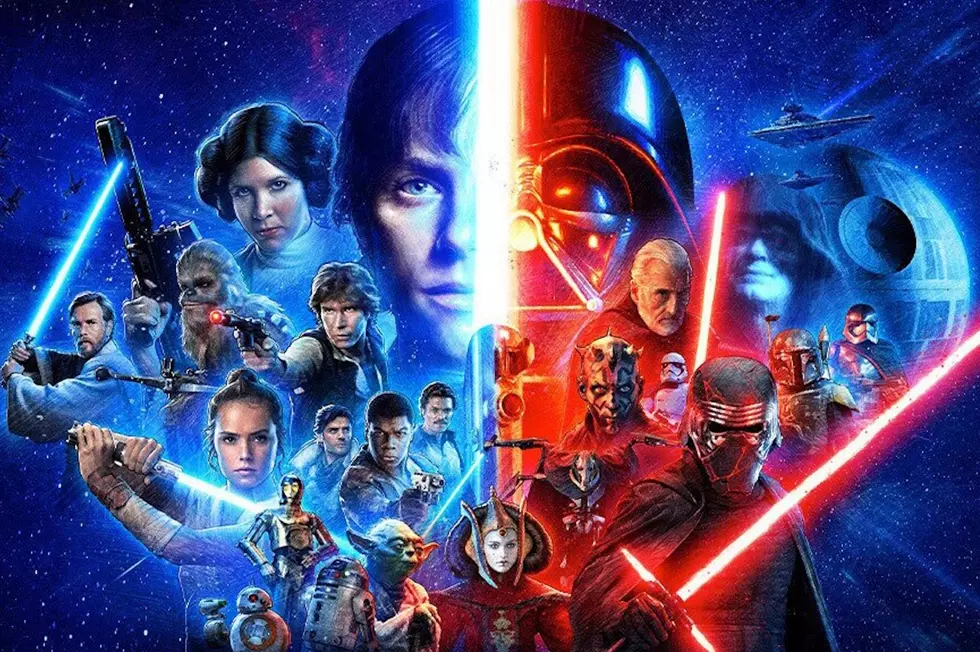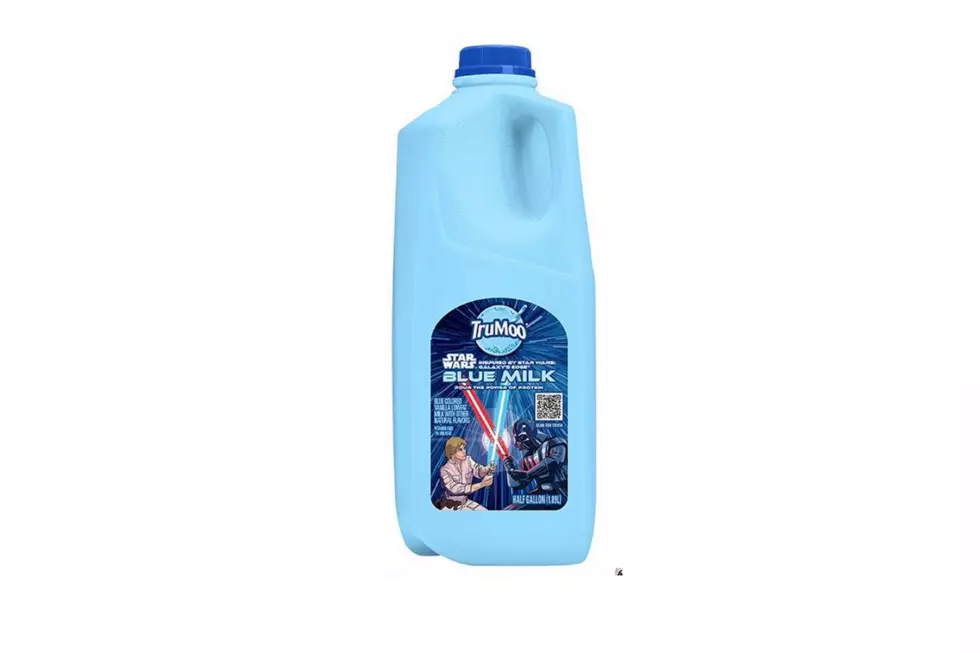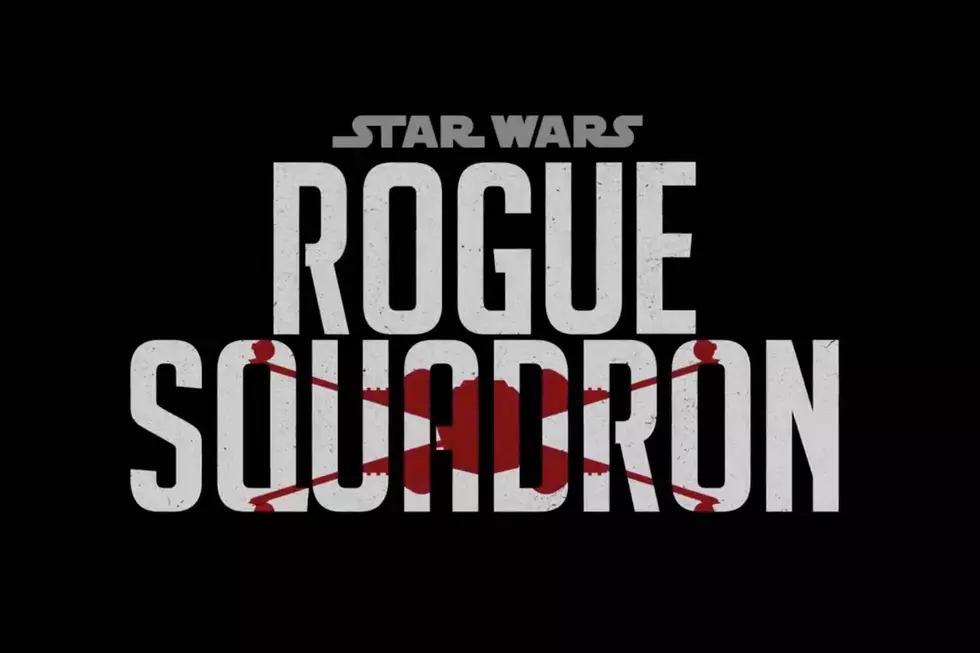
The Sad Saga of the Star Wars TV Show No One’s Ever Seen
It wasn’t a long time ago or a galaxy far, far away.
(It was 2012. In Orlando.)
That was the site of the sixth Star Wars Celebration, Lucasfilm’s semiannual convention for all things Jedi. The 2012 edition of the four-day nerdstravaganza included autograph signings, photo ops, Star Wars speed dating, droid races, and something called the “Super-Secret Star Wars Panel with Todd, Seth, and Matt.” “Todd” was animator and director Todd Grimes; “Matt” was Matthew Senreich and “Seth” was Seth Green, the co-creators of the stop-motion animated sketch show Robot Chicken. Their secret: The announcement of a Star Wars television series set between Revenge of the Sith and A New Hope called Star Wars: Detours.
The show was such a big deal for Lucasfilm that it was the subject of two different panels at Celebration VI, one on Friday and one on Saturday. Saturday’s panel even had an additional surprise: George Lucas showed up to help promote the series.
Lucas’s appearance, and the panel in general, was a major success. The first clips and trailers received an enthusiastic response from the Orlando crowd, and the whole event generated tons of positive press. It was a rewarding unveiling for the Detours team, who’d already been working on the show for several years by that point. By the time of their first public preview, they had 26 finished episodes, with another 13 episodes in production. All they needed was a network willing to broadcast them.
They never got one.
Three years later, Star Wars: Detours remains unreleased. Somewhere in the bowels of Skywalker Ranch sits a full season and a half of Star Wars television that no one’s seen. At this point, it’s looking increasingly likely no one ever will. This is the story of Star Wars’ brief comedic detour on the way to The Force Awakens.
---------
George Lucas was sick of people making fun of his work.
Awakening the Force for Episode VII put to bed what could have been the most pleasurably surreal Star Wars show in history.
That doesn’t mean Lucas thought Star Wars was beyond mocking. In fact, Lucas felt the complete opposite. In the thirty years since he’d first created Star Wars, Lucas had watched from the sidelines as other writers, artists, and filmmakers turned Star Wars jokes into huge hits (like Mel Brooks’ Spaceballs), and sometimes entire careers. (Without a Star Wars to critique and tease through Clerks and Chasing Amy, there may not be a Kevin Smith.) By the mid-2000s, the rise of fan films like Kevin Rubio’s “Troops” had practically turned Star Wars sarcasm into a cottage industry and a full blown comedy subgenre. Everyone else got to crack jokes about Star Wars; why not the guy who actually made Star Wars?
That was how it all began. With no new Star Wars movies on the horizon, Lucas began quietly developing what he first referred to as “Star Wars: Squishies,” named after the old “squash and stretch” principle of animation. Looking for collaborators, he turned to Senreich and Green, whose Robot Chicken routinely featured Star Wars sketches. Lucas saw and liked their parodies, and permitted the pair to make an entire half-hour special devoted to his characters. Robot Chicken: Star Wars was successful enough to spawn two sequels, and when Lucas needed partners to help him develop Star Wars: Squishies, Senreich and Green got the call.
Squishies eventually became Detours, a computer-animated cartoon that married Robot Chicken’s snarky pop-culture perspective with kid-friendly, all-ages humor. Each episode consisted of three six-minute shorts set in three different iconic Star Wars locales: the Death Star, Tatooine, and Coruscant. The initial concept was basically “Seinfeld in space,” observing the boring lives of ordinary people living on the periphery of the Star Wars universe, with Dex’s Diner from Attack of the Clones serving as the galaxy’s version of Monk’s Cafe.
As first envisioned, none of the Star Wars films’ major players would have appeared on the show. Instead, Detours would star new creations (like a pair of bumbling Stormtroopers voiced by Donald Faison and Breckin Meyer) alongside previously obscure creations like bounty hunters Bossk and Dengar. But the writers found they loved creating twisted versions of the franchise’s famous heroes and villains, and one by one they were all added to Detours’ core cast. They even got a few Star Wars luminaries to join in the fun, with Anthony Daniels (C-3PO), Ahmed Best (Jar Jar Binks), and the great Billy Dee Williams (Lando Calrissian) all returning to voice their old characters.
---------
When Star Wars fans talk about George Lucas, they make him sound like Emperor Palpatine; an almighty ruler seated on the throne of a vast kingdom, selfishly pursuing his own mad vision and lording over his subjects with absolute power. When Brendan Hay talks about him, he makes him sound … kind of cool.
“No matter what you think of the movies,” Hay told me, “this guy is is truly an ideas man. He never does run out of ideas. He never does stop pitching.”
Hay would know. As the head writer of Star Wars: Detours, he spent a lot of time with Lucas, who was intimately involved with the development of the show. When the writing staff assembled at Skywalker Ranch for two-week story conferences, Lucas spent half of every day in the writers’ room. He contributed concepts and jokes, explained the minutia of Star Wars mythology and continuity, and screened clips he wanted to inspire the style and humor of the show, everything from old Looney Tunes and Charlie Chaplin shorts to Little Britain sketches and viral videos.
Hay paints a very different portrait of Lucas than the popular one in Star Wars fandom, less a cranky old grandfather and more (in Hay’s own words) a “charming eccentric uncle.” As Hay tells it, Lucas had zero sacred cows when it came to his invaluable creation. “So many fans are like ‘Oh my God, you can’t mess with any of this!’” he says. “[Lucas] would be the first person to be like ‘Do whatever you want for a joke. Let’s just have fun with it.’”
Contrary to his reputation as a square dude with bland taste and stale ideas, Hay says Lucas’ suggestions were often ingeniously offbeat. During one story session, the writers hit a brick wall trying to resolve a dispute between two aliens. Lucas’ proposed solution: Have one character eat the other. “They’re both, like, alien monsters.” he explained. “You don’t have to settle this peacefully, just have one eat the other.”
“And we’re like ‘That kind of suggests our characters are cannibals,’” Hay remembers. “And he’s like ‘Well I’m not saying it’s perfect, but why don’t you try it?’”
The George Lucas Hay describes sounds a lot like the man who dreamed up Star Wars in the first place; the former USC film student who loved experimental cinema. With no network executives looking over their shoulders, Lucas empowered the Detours staff to unleash their imaginations. As long as they made the show appropriate for children, and stuck to the between-Episodes-III-and-IV timeframe, there were zero restrictions on what the show could do or even look like; when Grimes presented the writers with a bunch of different potential design aesthetics for the show, Lucas suggested they simply cherrypick their favorites specific designs from each, a big animation no-no. “It’s a cartoon,” Lucas said. “Take the best.” “Okay cool, nobody’s ever tried that,” Hay recalls thinking. “He always kept pushing us to be weirder and to try more stuff.”
Not surprisingly, the Detours writing staff was full of lifelong Star Wars fans, and they had tons of questions for Lucas — who, Hay says, humored all of them. He posed for wacky photos, screened an archival print of The Star Wars Holiday Special, and even explained his thinking behind one of the most infamous elements of the Star Wars prequels: midichlorians. (According to Hay, Lucas wanted to show that the Force only seemed mystical in the original movies because that was “a more uneducated time” and the science behind the Force had been lost to history.) “If every fan had a chance for George Lucas to personally explain the prequels to them,” Hay adds, “they would have a greater respect for the prequels. Personally, I didn’t ever really want to rewatch them. However, hearing George explain what he was going for in every decision he made, I totally understood why they are the way they are.”
-------
The half of every day George Lucas wasn’t in the Detours writers’ room he spent in meeting with various licensers, toy makers, and corporate executives. And, though few people outside the company realized it at the time, he was also finalizing his plans to sell Lucasfilm to Disney. The $4 billion deal was announced on October 30, 2012, barely two months after the announcement of Star Wars: Detours at Celebration VI.
In March of the following year, StarWars.com published a post called “A New Direction for Lucasfilm Animation,” announcing the end of the popular Clone Wars animated series and postponing the release of Detours until “a later date.” And with that, the series was done before it ever began. It was as if the whole production had been frozen in carbonite and locked away in Jabba the Hut’s trophy room. It still hasn’t been thawed out, and there’s no indication that the “later date” will ever arrive. (ScreenCrush repeatedly reached out to representatives of George Lucas and Lucasfilm for comment on if, when, and where Detours might see the light of day. They declined each time, citing busy schedules with The Force Awakens.)
That 2013 StarWars.com post explains that “Detours was conceived and produced before we decided to move forward with the new Star Wars trilogy, and in the wake of that decision, Lucasfilm has reconsidered whether launching an animated comedy prior to the launch of Episode VII makes sense.” That certainly jives with the comments current Lucasfilm president Kathleen Kennedy has given while promoting The Force Awakens. Discussing her company’s relationship with Disney with The Hollywood Reporter, along with the push and pull of exploiting Star Wars’ financial potential without diluting its value, she talks about the creation of the current Disney XD animated series, Star Wars Rebels. “When we were doing the development,” Kennedy told THR, “there was a real emphasis on wanting to do something far more comedic than what we were prepared to do. So we sat down with the story team inside Disney XD, and we spent a lot of time taking everybody through why we thought the show we wanted to develop was a better way to go.”
Those don’t sound like the words of a woman who would release a Star Wars series that depicts an Obi-Wan Kenobi (voiced by Seth Green) who uses the Force to hit on ladies.
In interviews, Green (who declined to comment for this piece) has repeatedly insisted that Star Wars: Detours will eventually be released somewhere, even if the world of television will have to “fundamentally change” before it happens. For his part, Hay is less optimistic. “I think our window was very brief,” he says. “We made sense for the franchise at a certain time. Now that you have The Force Awakens and all these new characters, all this new stuff, we’re not as relevant.”
That’s certainly true. Star Wars: Detours was the product of a Lucasfilm that was only concerned with finding creative ways to explore the franchise’s existing canon. The Lucasfilm of 2015 is preparing to launch a new (and never-ending) franchise, one whose entire marketing campaign has been predicated on invoking the sense of magic and wonder people felt when they saw Star Wars for the first time in 1977. Detours was explicitly designed to deflate that sense of magic and wonder. George Lucas might have had a sense of humor about Star Wars, but I’m not sure that the series’ new regime does.
In fairness to Star Wars’ new stewards, it’s almost unheard of for a major franchise to actively make fun of itself in the way Star Wars: Detours did. That’s precisely what made it so interesting, and its permanent postponement so disappointing. And while it’s sensible for Disney to want a child’s first experience of Star Wars to be The Force Awakens, and to worry that a kid who’s introduced to Star Wars through Detours would have a warped view of the material, I look to my own childhood, when Spaceballs meant as much or more to me than Star Wars did, to see how comedy can be a great gateway to serious genre work. As a kid, I found a lot of movies through their parodies in Mad Magazine or Cracked; reading their spoofs made me want to track down the originals. If it was a hit, Detours could have had the exact same effect.
Instead, awakening the Force for Episode VII put to bed what could have been the most pleasurably surreal Star Wars show in history. Hay says he and his writers were so shocked by the freedom Lucas gave them to make fun of his baby (and even himself) that they used to privately quip that Detours was going to become his generation’s Star Wars Holiday Special, the piece of obscure Star Wars content that fans always talk about but never get to see. “We kept joking,” Hay said to me with a chuckle “that George was just going to air us at his Christmas parties as a goof.”
Sadly, the writers were very close to being correct, with one key distinction. At least the Star Wars Holiday Special aired somewhere once.
More From ScreenCrush
